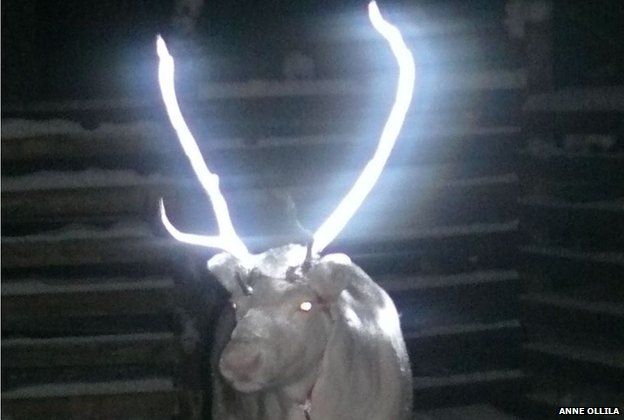Are Rhino horns and Elephant tusks being dyed pink to deter poachers?
An image featuring a rhinoceros with a pink horn and an elephant with pink tusks is going viral on Facebook.
Claim:
The image was posted by a member of ‘Unbelievable Facts Club,’ a Facebook group with over 104 thousand followers on 27 June 2021. The post claims that elephant’s tusks and rhino horns are being dyed with a pink dye(applied on currency notes) to make them valueless to poachers and people indulged in ivory trading. The caption being circulated with the viral post reads “They are using the same pink dye that they use on banknotes. This makes the Ivory unsellable and it can’t be consumed. The animals are not harmed and its saving their lives.”
The post has grabbed many eyeballs on Facebook. At the time of writing this news report it had already garnered 1.3 thousand likes on Facebook and had been shared more than 200 times.

(Photo: Facebook/Screenshot)
We also found some old posts with the same claim, featuring the same image and caption on Facebook. A couple of them can be viewed below:
Truth
The claim that elephant’s tusks and rhino horns are being dyed pink as a conservation strategy to devalue them so that it could act as a deterrent against poaching and ivory trading, is fake.

(Photo: Getty Images/Screenshot)
The image has been digitally altered to garner the attention of netizens around the world. We ran a reverse image search on the viral photo and discovered the original image of the rhino (in the viral picture) on Getty Images, a global digital media provider. The rhino in the original photo is a white rhino and it does not have a pink coloured horn as shown in the viral image. The photo was originally captured by Heinrich van den Berg, a professional wildlife photographer, and author. The viral image of the elephant with pink tusks is also doctored, with the help of reverse image search we were able to find the original image on an article published by an educational website named OpenLearn in 2005.

We also found the original image in a video uploaded on a Youtube channel named AlexTriceratops123 on 26 August 2011.


Although the devaluation of rhino horns is done to protect them from poaching, the process does not involve dyeing their horns with a pink solution. Rhino Rescue Project, a South African wildlife conservationist organization carries out an innovative medical procedure to devalue rhino horns wherein they first tranquilize rhinos and then infuse the horns with toxins that are extremely harmful to humans but do not cause any harm to the animal. The idea behind this procedure is that once the buyers discover that the horns are toxic to humans, they will abstain from purchasing them, which will ultimately put curtains on the poaching of rhinos. Rhino Rescue Project has explained the entire devaluation procedure on their website and it can be accessed here also they have refuted the claim of using a pink dye to colour the rhino horns here.

Well, there have been incidents in the past wherein people have conducted experiments on animals’ horns in some form or the other to safeguard them from potential dangers. In 2014, herders in Lapland, Finland tried spraying a special reflective paint on their reindeers to save them from dying in road accidents. Their antlers were painted so that people driving on the road could navigate easily and avoid any chances of an unfortunate collision. Thousands of reindeers die every year due to road accidents in Finland and hence such an innovative experiment was undertaken.
- Is Rahul Gandhi’s name misspelled on a Congress Party hoarding in Wayanad? - August 4, 2021
- Has CM ‘Yogi Adityanath’ not taken even a single penny as salary? - August 2, 2021
- Did lakhs of ‘Shiva Lingas’ surface in the Shivakashi river bed? - July 31, 2021





